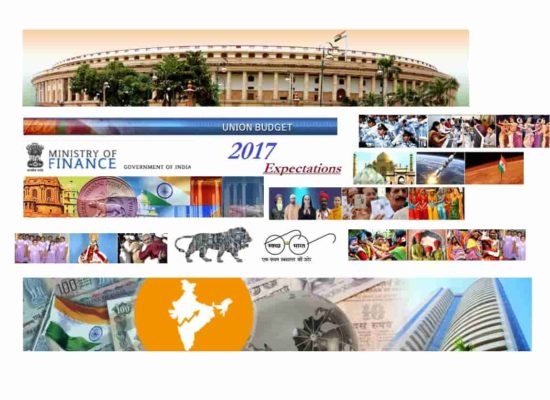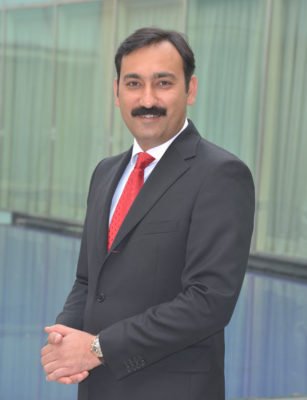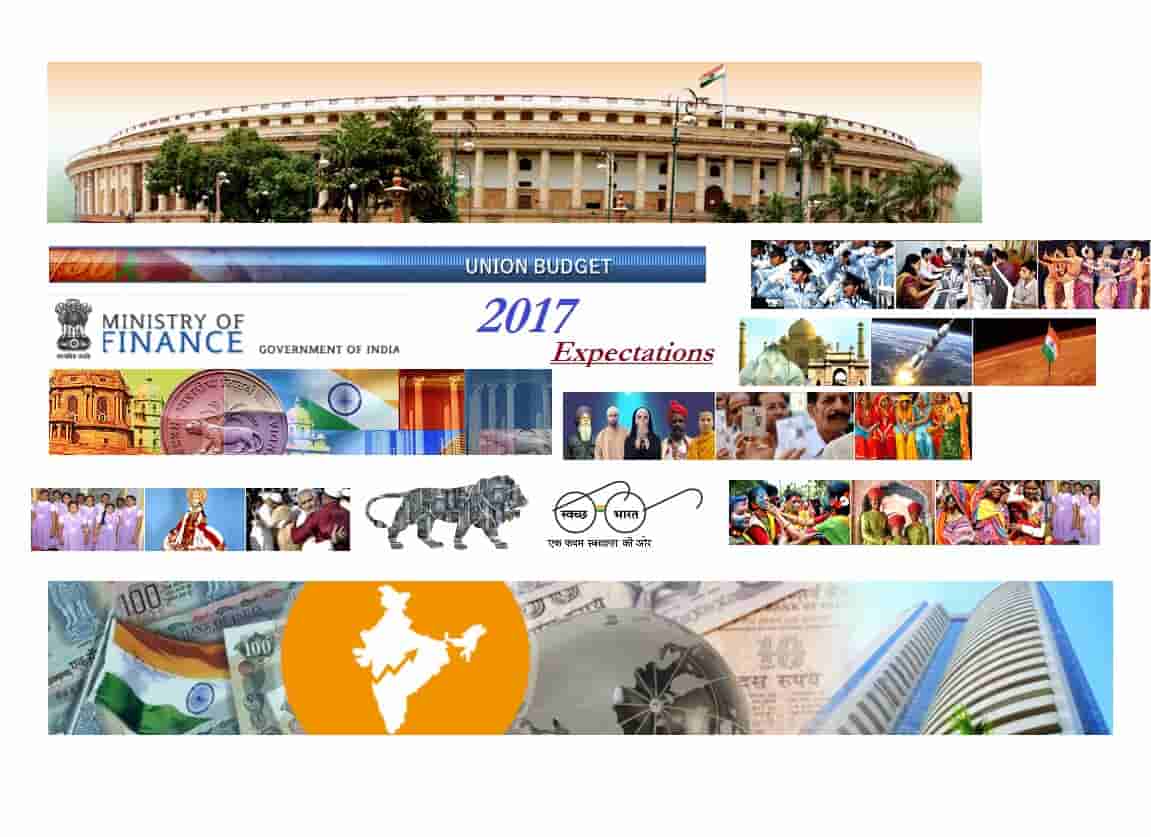India Inc. is looking with great anticipation at the Union Budget 2017 announcement, on February 1, 2017. This is the next major announcement by the Government of India after the recent Demonetization drive and is expected to spell out the policies for the world’s fastest growing economy. Team Estrade spoke to industry leaders, to know their expectations from the Union Budget 2017. This is brought to our readers as a miniseries, where India Inc.’s business leaders share their concerns and insights.


Rohin Kapoor, Director, Deloitte Haskins & Sells LLP
Given the massive investment requirements of the education sector to meet the growing demands of ever increasing population, the budgeted expenditure is clearly not enough.
Increasing public expenditure: In line with the Kothari Commission’s recommendation to increase public expenditure to 6% of the GDP, the government is requested to announce a higher budgetary allocation this year. The funds can specifically be devoted towards improvement of physical infrastructure, research & development, teacher training & adoption of technology for improved learning outcomes.
Removing roadblocks from foreign & private investment: The government has been actively promoting India as an ideal FDI destination for a number of sectors. We request the FM to provide clarity on government’s stand on attracting foreign & private investment in this sector through regulatory interventions.
Separate deduction for tuition fees: The tuition fees across educational institutions have increased substantially in the recent years and bundling the tuition fees exemption under all-encompassing section 80C with a total deduction of Rs. 1.5 lakhs has not really incentivized higher studies. To encourage middle class households to pursue academic dreams, a separate section under the Income Tax Act should be provided.
Re-examine withdrawal of service tax exemption: The government should consider restoring the service tax exemption on renting immovable property by an educational institution to a third party. Similarly, service tax levy should also be withdrawn from auxiliary education services such as transportation, canteen, etc. provided by educational institutions directly to students. The proposed GST regime should provide such exemptions to the education sector to encourage lower dropouts and higher enrolments.
Other sectoral interventions: Investment in development of education leadership & faculty is the need of the hour. A roadmap for effective utilisation of funds under the mandatory CSR proviso can also be suggested.

Varun Khanna Chairman, AdvaMed India Working Group and Executive Committee Managing Director, BD India & South Asia
Key Asks from FM:
Avoid protectionist barriers and relax import duties: If India wants to be globally competitive and become more self-sufficient, it should send a positive message to global investors that it is “open for business”. While seeding the environment for domestic competitors by increasing demand (expand insurance); the Union budget should have provisions that incentivize overall manufacturing and investment—-including lowest possible tariffs on raw material & components, promotion of research & development, skill development, greater health expenditure or better insurance coverage, low regulatory costs, assurance of predictable policy. This will benefit the cause of Make in India rather than raising custom duty increase that is eventually passed on to the patients.
For example, the Finance Ministry’s move to raise import tariffs on medical devices in January of 2016 will not only further restrict penetration of medical devices in the country, but also act as a deterrent to the ‘Make in India’ campaign in terms of attracting Foreign Direct Investment in the sector, as India will be seen as a market that does not offer economies of scale. Since the local manufacturing of devices and equipment is still in a developmental phase, the government should not discourage imports by raising the duties as has been done.
The custom duties should be reduced particularly on devices not currently manufactured in India and diagnostic devices
In addition, the Department of Pharmaceuticals issued a notice indicating that it is considering a Preferential Market Access policy for medical devices and also thinking of imposing content requirements for medical devices. All these steps send negative signals to the innovative manufacturers and investors.
Bolster indigenous manufacturing of medical devices and equipment: The manufacture of medical devices should be a special focus under the current ‘Make in India’ program. Financial incentives such as tax holidays should be extended to manufacturers and their products.
Solution (short-midterm): Rescind import tariff hike (but retain tariff reduction on raw materials and inputs).
Solution (Mid-long term): Work with global and domestic stakeholders to identify positive incentives and policy measures that will attract investment and innovation.
Enforce Provisions that offer Operational Ease of DoingBusiness: The regulatory policies need better harmonization with global regulatory practices and ensure provisions that do not hinder operational ease of doing business for innovative device companies to invest and operate in the country. For instance, introduction of too many compliance features for increasing scrutiny in the latest draft of medical device rules will lead to delay and increase in procedural cost that will ultimately hamper access to patients. A better approach would be to have checkpoints/systems in place that you are automatically driven to compliance.
In drafting the latest draft medical device rules, the ministry has adopted the GHTF guidance essential principles but at the same time also picked from regulatory practices followed in other countries like FDA, PMDA etc. However, the device sector will have more clarity and predictability, if the time tested vital elements of essential GHTF principles along with risk based classification, form the backbone of rules.
The additional requirement for clinical investigation of medical devices already approved in GHTF countries and third party audit shall cause unnecessary delay in the availability and access of innovative medical devices to the HCPs and the patient population.
Moreover, the provisions with respect to labeling of medical devices should be aligned with the Draft rules published in July 2016, and the clause with respect to the shelf life of medical devices should be amended to be in line with global requirements.
Separate regulatory framework for medical devices and equipment:The Drugs and Cosmetics Act, 1940 treats devices at par with pharmaceutical products and the rules, regulations and policies for pharmaceuticals are applied to medical devices by agencies and government officials that come from a pharmaceutical mind frame and education background. This leads to an unpredictable regulatory environment that is inconsistent with global norms for regulating medical devices.
Solution (short-midterm): (1) Amend the Drugs and Cosmetics Act to include a new globally harmonized definition of a medical devices and in vitro diagnostics (IVDs) removing any reference to medical devices under the drugs definition (see attached letter from AdvaMed to PMO) and (2) Work with the global medical devices industry and relevant stakeholders to finalize the Medical Device Rules, 2016 ensuring that all provisions are harmonized with global best practices.
Solution (Mid-long term): Introduce and pass a new Act for Medical Devices that sets out a comprehensive and high-level framework for the regulation of medical devices.
Drive innovation and attract investment for this industry – The government needs to recognize the role of innovative and quality devices in meeting the overwhelming healthcare needs of India’s population. Therefore, it should consider innovation and new technologies for medical devices depend upon the patients’ needs.
Promote an Innovative Driven ecosystem – Governments around the world are exploring policy measures to attract investment and promote sustained innovation. The government in India too should take a realistic view and embrace innovation. For this, the union budget should provide diverse solutions from the inside and welcome global medical device manufacturers who can conduct R&D, invest and partner with local innovators.The med tech sector is still in its nascent stage and therefore in order to meet the growing needs of the Indian patients it’s important to build an ecosystem that encourages and rewards medical innovation. If this does not happen, India will go back to the 16th century and struggle to provide what the patients rightfully need.
Investment for strengthening healthcare infrastructure: To make healthcare more accessible to the patients the focus should be on improving primary healthcare. The infrastructure should be strengthened by investing on more quality tertiary care centers for patients and supply chains for better healthcare delivery.

Varun Rathi, COO & Co-founder of Happay (A Bangalore based start-up in fin-tech segment that offers expense management solution for SME’s) on his expectation from the upcoming budget.
Union Budget 2017 Expectations
– 10% tax rebate on incremental earnings year over year in digital forms for all SMEs.
– Enable digitization and payment via credit/debit card for all government fees and payments, taxes, penalties. This will result in huge adoption.
– Remove fuel surcharge of 2.5%
– Working Capital / SME loans at 1% lower rates based on the amount of digital acceptance.

Ramki Gaddipati, CTO & Co-founder of Zeta on his expectations from Budget 2017.
“As digital payments take off, we’d like this year’s budget to focus on financial inclusion. We hope the Government of India reduces indirect taxes and charges levied on digital transactions. Further, income tax incentives should be provided to people who use digital payment options. It’s also time that digital payment and documents be treated legally on par with physical instruments. We also hope that the Government increases the ceilings on employee tax benefits as they’re now quite overdue. To aid merchants, the Merchant Discount Rate on card payments should be abolished. The industry can also benefit from tax incentives provided to organisations operating in the digital payments space.”

Rahul K Patwardhan, CEO, NIIT Limited
Although there has been a lot of focus on skills and training, we expect some tax relief for the education and training sector in this budget. We expect that the government will introduce measures to ensure a level playing field for the highly regulated Indian online education and training companies, against the global players who are entering the Indian market aggressively in an unregulated manner as far as Indian taxation regime is concerned.
The Government has already announced phased reduction of Corporate Tax rates from 30% to 25%, and we expect some announcement in the ensuing Union budget to this effect. Tax regime is one of the significant considerations for Multinational Enterprises to set up their business in a particular tax jurisdiction. This would be a tremendous step from the government in respect to ease of doing business, encouraging more multinationals to expand their business in the country.
GST is another much-awaited Indirect tax reform, which will boost the economy. As, GST has been deferred to July 1, 2017, we hope that the government should accordingly extend the date of phase wise GST provisional registration as organizations are facing issues in getting registered on GST portal. There should be firm timeline and industry should be given sufficient time for implementation, since a lot of modifications is required in the IT Systems. Further, specifically for Service sector, there would be an extra burden on compliances for multistate registrations, therefore ease of compliance should be considered i.e. centralised registration or unified registration.

Srividya Kannan , Founder, Director – Avaali Solutions Pvt Ltd.
Post demonetization in the country, what kind of expectations do you keep from the upcoming Budget, particularly for the IT industry?
I do expect a lower corporate tax rate. Would be great if the tax rates are brought down to 18%. Also, given that start-ups hardly make profits in the initial years, would be great if the direct and indirect tax exemption for start-ups could be increased to the first seven years. Also, the mandate to only include start-ups having an incubation fund should be removed as all start-ups would need to be covered irrespective of whether they are bootstrapped, have bank debt funding or have adopted incubator / angel funding. Rationalizing of transfer pricing rules is long due, hence any announcements to enable simplicity and transparency to the process would be very useful.
India Inc.’s Union Budget 2017 Expectations






